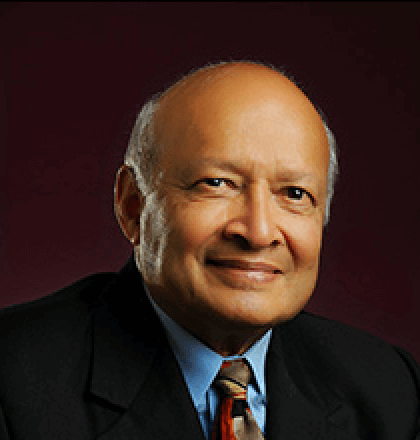 2010 Viterbi Lecture
2010 Viterbi Lecture
Ming Hsieh Department of Electrical Engineering
Title
“From Radiative Transfer Theory to Fast Algorithms for Cell Phones”
Norman Abramson
Professor Emeritus
University of Hawaii
Abstract
We first describe how noticing analogies between studies of the Wiener-Hopf equation in the statistical theories of prediction and filtering and in the earlier researches of V. Ambartzumian and S. Chandrasekhar in radiative transfer theory led to fast implementations of the Kalman filter for constant parameter state space systems. Further exploration led to the concept of Displacement Structure and the development of fast algorithms (and efficient integrated circuit implementations thereof) for a host of problems in several fields, including communications, control, signal processing, linear algebra and operator theory.
Biography
After his studies at the Massachusetts Institute of Technology (Sc.D., 1961), Thomas Kailath was invited by S. Golomb to join the Communications Research Group at the Jet Propulsion Laboratory in Pasadena, CA, in a section led by A. Viterbi. He also held a visiting appointment at Caltech, which perhaps had a role in his move in 1963 to Stanford University, where he is now Hitachi America Professor of Engineering, Emeritus. Over the years, aided by a stellar array of over a hundred doctoral and postdoctoral scholars, his research has ranged over several fields, including information theory, linear systems, estimation and control, signal processing, semiconductor manufacturing, probability and statistics, and matrix and operator theory. Major honors include the IEEE Education and Signal Processing Medals and the IEEE Medal of Honor in 2007. He has also held Guggenheim and Churchill Fellowships, received several honorary degrees, co-founded companies with his students, and been elected to the U.S. National Academy of Engineering, the U.S. National Academy of Sciences, the American Academy of Arts and Sciences, the Silicon Valley Engineering Hall of Fame and several foreign academies. In 2009, he received a Padma Bhushan national award from the President of India, the Blaise Pascal Medal from the European Academy of Sciences, and was elected as a Foreign Member of the Royal Society of London.
Published on June 26th, 2017Last updated on August 2nd, 2023


